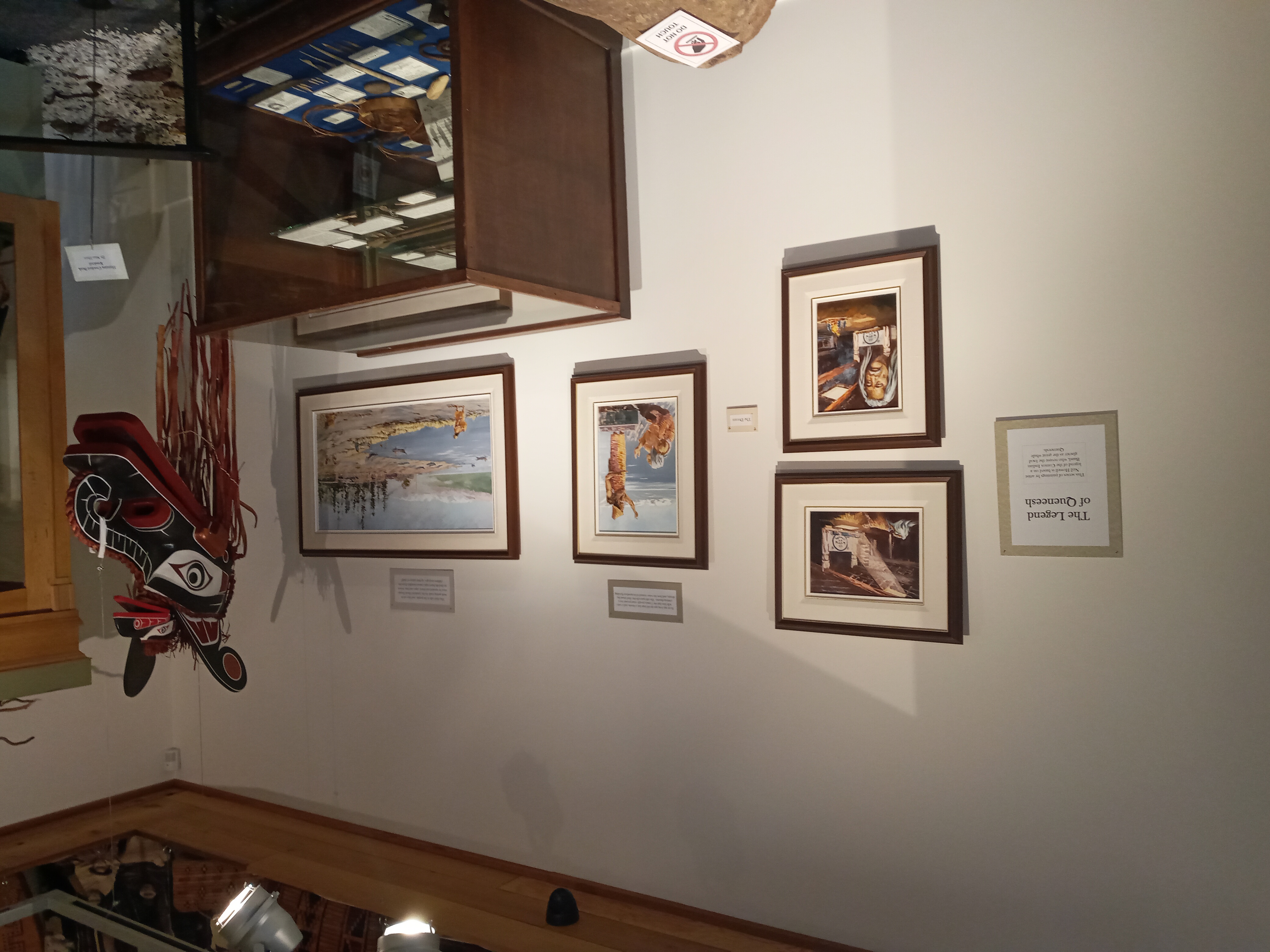
|

|

|
"... BIGHOUSE FRONT
The main crest painted on the cedar wall represents Kwanis, the grey or white whale. A common practice in Northwest Coast art, the design is "split" with each half of the whale joining at the mouth in order to create a third, frontal view.
For the Comox people, this crest is integral to our identity. One origin for this symbol goes back to the time of the flood when a large white whale saved the Comox Valley. Wee e forever reminded of this act whenever we look upat the Comox glacier, or Kwanis, watching over the community.
The moon and stars above the whale have a number of different meanings. For the design, they at once represent the sky world, while also signifying that our ancestors in the heavens are watching over people. These symbols are formed out of copper because, for us, it is the most precious metal on Earth. It signifies both the wealth of our people and the wealth of the heavens.
Andy Everson, Artist
..."
|

|

|
|
The Legend of Queneesh - This series of paintings by artist Neil Howell is based on a legend of the Comox Indian Band, who revere the local glacier as the great whale Queneesh.
|
The Dream - In an age long ago an old man has a dream, and a voice tells him that the Comox people must prepare for a coming disaster. The old man tells the chief about the dream, and how the voice warned of tremendous flooding.
|

|

|
|
The chief calls to his people, and they set to work getting ready for the predicted flood. Foods must be smoked and dried, capes and hats woven to shed heavy rain, canoes mended. Even the children must give up their games to help!
|
As the rains begin, a group of the strongest men are sent to the top of the glacier to attach a woven cedar rope to the mountain. Before long the riverrsbegin to flood, and the only hope for the band and all of its canoes and possessions is that long rope holding them together.
|

|

|
|
The waters rise higher and higher, while the people baitinuously and struggle to keep the canoes afloat. But they grow more and more afraid. Finally, just as the waters seem about to cover the mountaintop, the huge whale glacier itself begins to move. It takes on a life of its own, breaking through the floodwaters just as a great whale breeches.
|
Startled at first, everyone soon cheers and chants "Queneesh! Queneesh!"- and they realize that the rain too has stopped. In the morning the sun shines bhtly, as the Comox people bow and pray to the great whale that has saved them.
|

|
|
|
|
|












